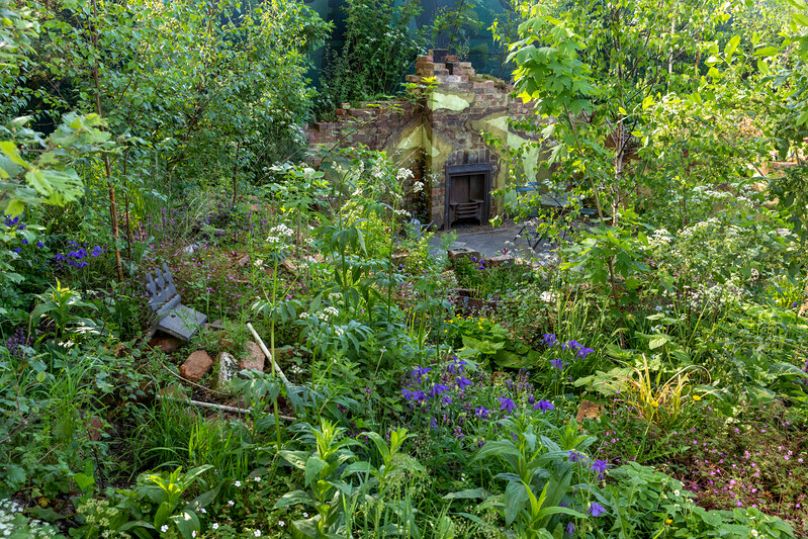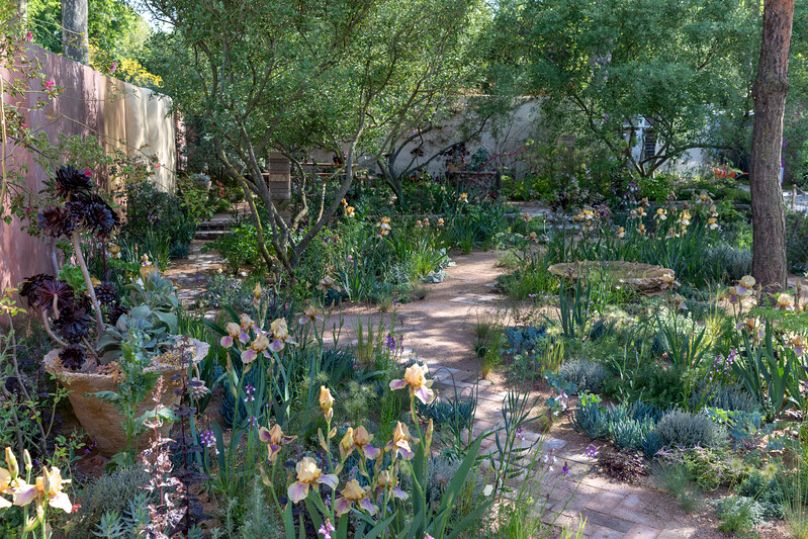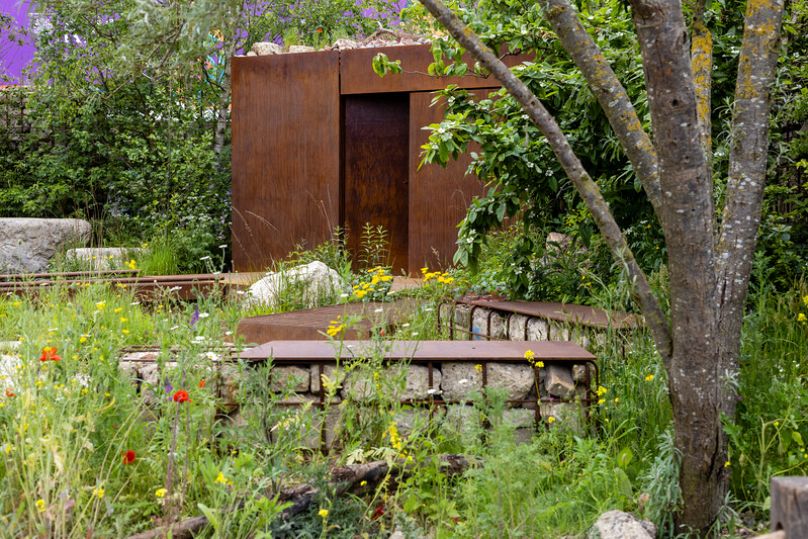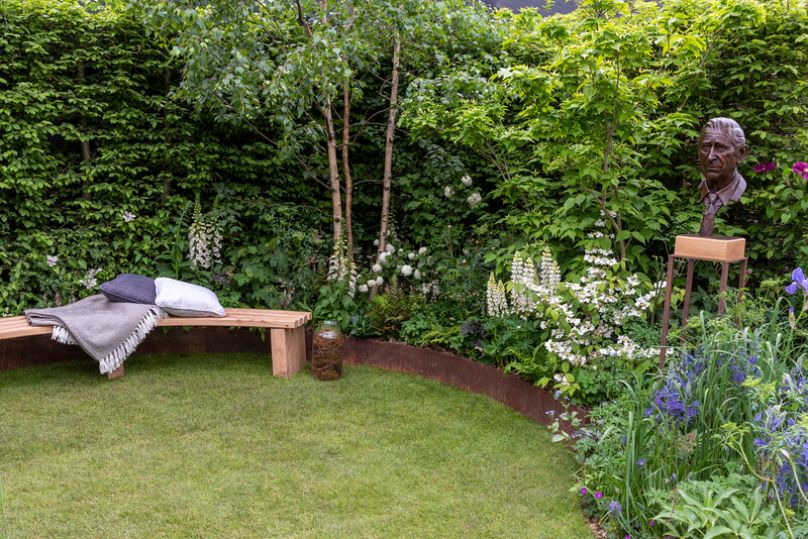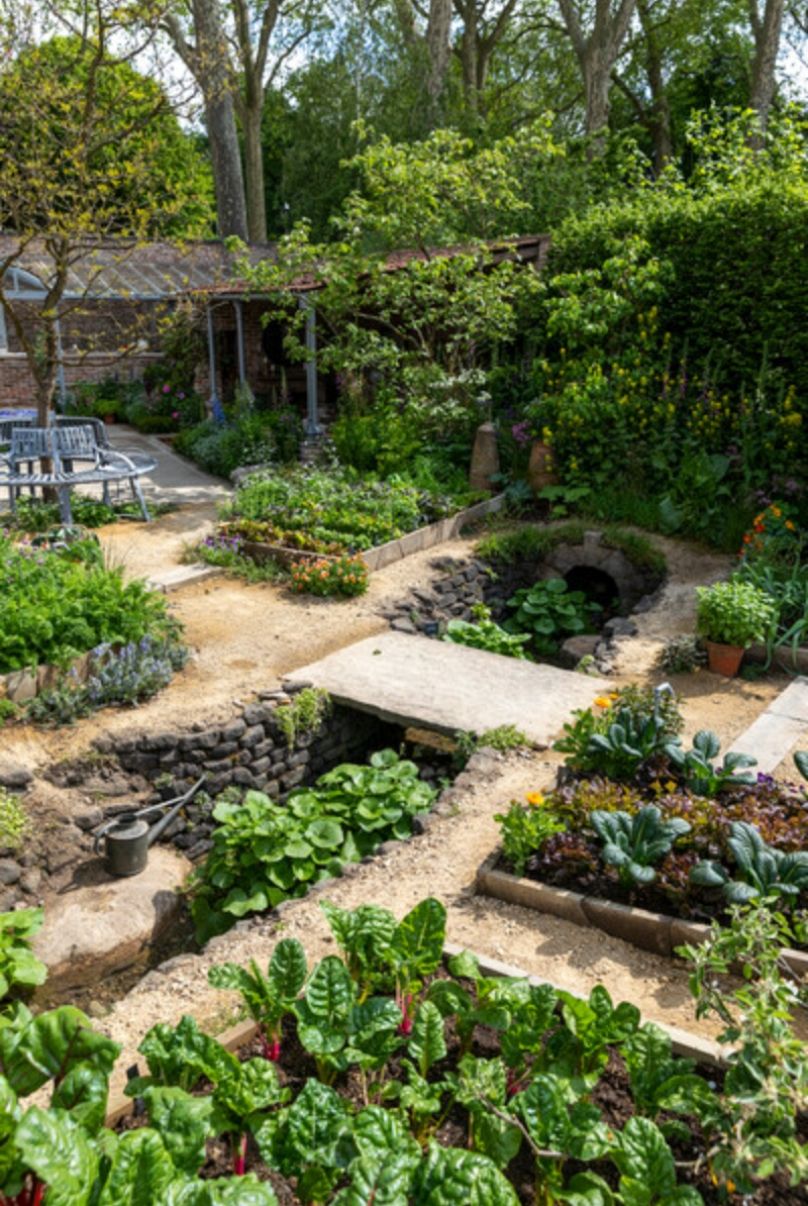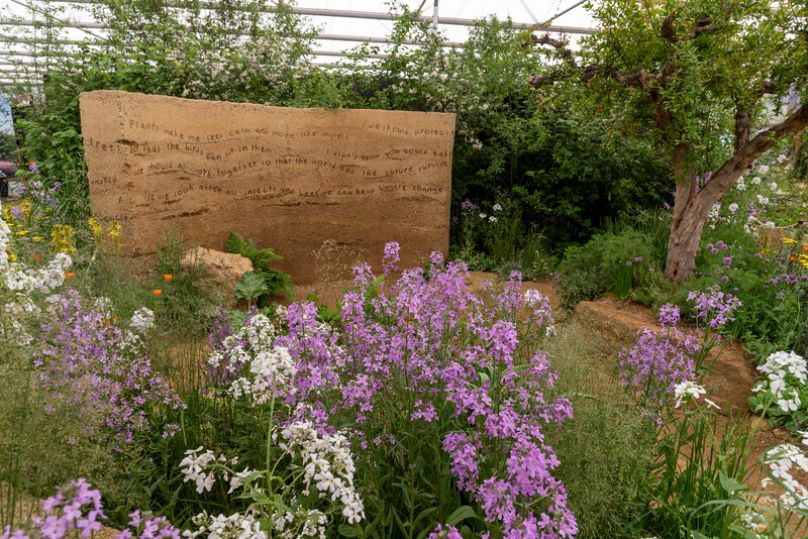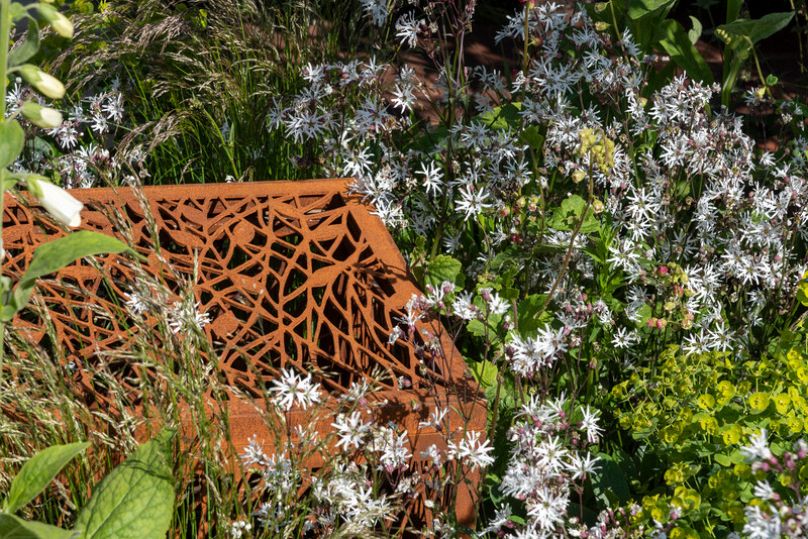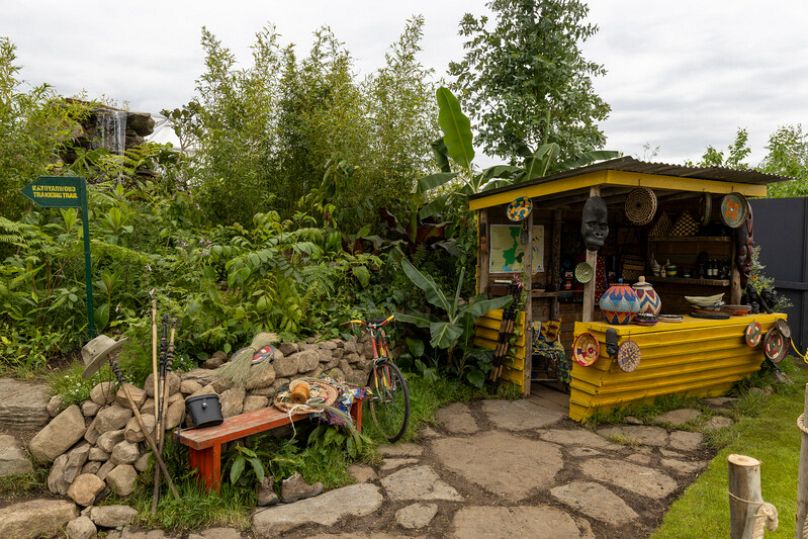This year's horticultural event featured some of the most stunning gardens ever seen in its decades-long history - we run down the trends which emerged
Chelsea Flower Show was back with a post-pandemic bang this year, boasting some of the most spectacular gardens and remarkable planting the prestigious event has seen in recent times.
The six day event, which traditionally takes place in May, showcases the best of the best of garden design and plants and even has royal approval - King Charles and Camilla were in attendance to admire the beautiful outdoor spaces, joining countless celebrities and green-fingered enthusiasts.
While each garden at Chelsea is unique, the Show is an excellent place to get inspiration for your own green space so, with that in mind, Euronews Culture is here to run down the biggest trends to take away from this year’s floral phenomenon.
Weeds - are they really pests?
The word on everybody’s lips at Chelsea was ‘weeds’. There’s been a debate raging in horticultural circles over whether the plants that grow naturally and tend to get pulled up to make space for a more manicured look are actually that much of a problem after all.
While some maintain that all weeds should be removed - and that the trend for rewilding has now gone too far - others will happily defend the often very attractive plants.
Superstar designer Cleve West’s garden for the charity Centrepoint, for instance, featured dandelions which are typically disposed of. Interestingly, they’re important for biodiversity, offering an early source of nectar for bees and other insects - and the cheerful pop of yellow isn’t unpleasant either.
West is well aware of those that don’t accept that weeds have a place in a curated garden: “While our use of so-called weeds, might challenge preconceptions of what constitutes perfection in planting and design, my intention is not merely to flout convention but widen our appreciation of nature and broaden the definition of what comes under the umbrella of horticultural excellence” he explains, saying, “Not everyone will like the garden, but as long as people are talking about it and the work of Centrepoint, then we will have achieved our goal”.
Expect to see more weeds at next year’s Chelsea - and perhaps consider leaving them to grow in your own garden. You may become a convert!
Sustainable gardening - recycling and reusing
As the climate change debate continues to heat up, gardeners at Chelsea made sure to do their part by championing recycling and reusing materials at the show.
Sarah Price, who designed one of the most popular spaces, the Nurture Landscapes garden, managed to create one the lowest carbon footprint of any Chelsea garden ever built. She used many materials which would otherwise be considered waste and reclaimed elements including canvas, rope made from plant stems, reclaimed brick and objects crafted from fallen trees.
The Saatchi Gallery also chose to put reused materials at the centre of their Dave Green-designed garden.
The natural planting and huge installation by British multimedia artist Catriona Robertson, displayed the importance of ecological growth and emphasised the need for humans to leave nature alone to a greater extent than in the past. Robertson’s worm-like sculptures were created using reclaimed urban materials and plant life and, although they won’t fit into every garden, they’re certainly part of a move towards sustainability in garden features and protecting the environment.
Pared down colours
One of the most talked about trends at Chelsea was the colour palette, which was rather more soft and muted than is often the case.
The vast majority of gardens shied away from brights, choosing a lot of whites as well as pale yellows, pinks and purples. The flowers were set off beautifully against walls and backdrops mostly in soft sand colours in almost every design. There was one exception though - every now and then, visitors could catch a glimpse of a red campion which added a pop in the palette.
The RHS’ own Garden of Royal Reflection and Celebration had a special reason to stick to the low key colour chart.
Designed by Dave Green, the stand out space used light pink and white planting as a tribute to the tastes of the late Queen Elizabeth II and chose purple and blue aspects as a nod to King Charles’ preferences.
The garden also featured several trees which brought a woodland feel to the space - another micro-trend for this year.
The rise of ‘edimentals’
As many of us attempt to be more sustainable in our own lives, it’s little surprise that one of the main trends to come out of this year’s Chelsea is so called ‘edimentals’ - or plants that are edible as well as ornamental. The rise of ‘edimentals’ reflects the increasing interest in grow-your-own produce, which spiked at the start of the pandemic and hasn’t gone away.
While traditional edible plants were the star turn in Mark Gregory’s Savills Garden, shown in the form of a seasonal kitchen garden, a number of other designers chose to focus on plants as beautiful as they are practical for food growing.
Harry Holding’s School Food Matters Garden, for example, showcased plants including fruit trees, artichokes, herbs, asparagus and fennel.
One particularly impressive display was the Caley Brothers’ mushroom exhibit. Their home-grow kits proved there are very few barriers to what even the least green-fingered gardener can produce. Plus, if you’re impatient when it comes to plant pay-off, cultivating mushrooms is a no brainer - they’re ready to harvest just a week after they start growing.
Wildlife friendly gardens
While animals are seldom allowed in the grounds of Chelsea, they weren’t forgotten in many of the designs, which provided spaces for furry critters as well as insects crucial to the health of the planet.
Martyn Wilson’s RSPCA garden was among a number which included secluded boxes to provide a safe space for invertebrates, frogs and toads, as well as hedgehogs - who were given ground-level entrances to the habitats.
The Newt’s ‘Beezantium’ garden took the role of wildlife even more seriously - offering an insight into a bee’s life, complete with nectar-rich planting and a scaled-up beehive.
While the beehives on display were blocked up and a no-go zone for bees in case of stings, the garden and exhibit let visitors know how important the insects are to the global ecosystem and the need to protect them.
International wildlife conservation charity Fauna & Flora had one of the most mentioned gardens at the event, with a focus on conserving gorillas in their natural habitat.
The Jilayne Rickards-designed space brought to life the journey of an eco-tourist on a gorilla trek through the landscape of Central Africa’s Afromontane region.
Supported by the British biologist and natural historian Sir David Attenborough, the garden shines a light on how a more holistic approach to tourism is helping gorillas, in that it’s crucial to leave nothing behind after visiting an area so fragile. Rickards even chose to place a tourist kiosk in her design, as a nod to communities benefiting from eco-tourism.
While you will likely not want to recreate the kiosk in your own garden, it is possible to emulate the overall vibe of the space in a very simple way. Rickards explains using PAS 100 compost, which is recycled from household waste, saying, “If you can, I really recommend it. You buy it loose too, which avoids waste on bags”.
Here’s to a summer of gardening and to Chelsea Flower Show 2024!












